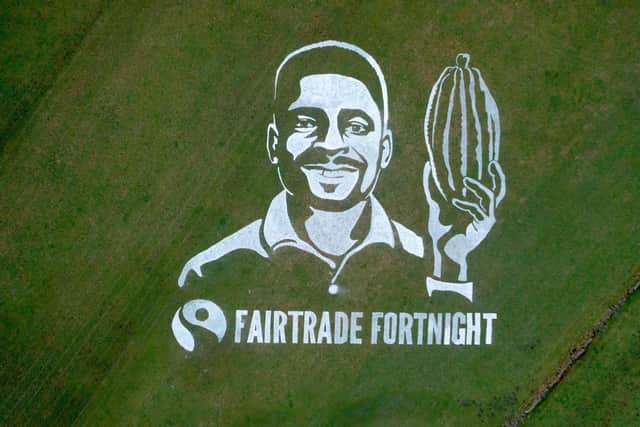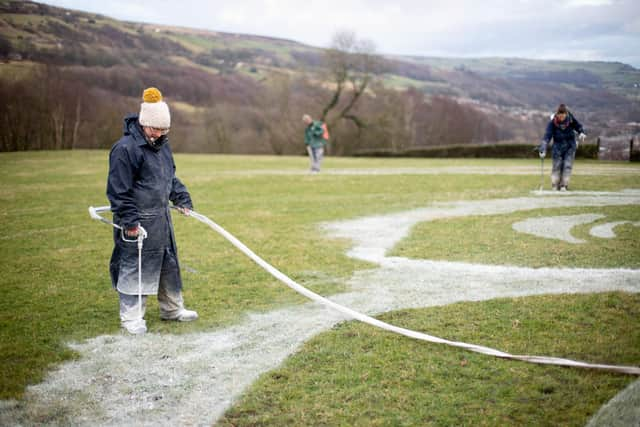Giant painting in Calderdale marks the start of Fairtrade Fortnight
and live on Freeview channel 276
The piece measures around 30 by 30 metres and is of Bismark Kpabitey, a Fairtrade cocoa farmer who is a member of the Kuapa Kokoo Farmers Union in the Ahafo region of Ghana.
The painting shows Mr Kpabitey, who has also worked on a Dynamic Agroforestry Project in Ghana, holding a cocoa bean aloft.


Advertisement
Hide AdAdvertisement
Hide AdSand in Your Eye is no stranger to huge displays as they have previously created works of Greta Thunberg, Emily Brontë and David Attenborough.
Sand In Your Eye's Jamie Wardley, said: “We were delighted to be approached by Fairtrade to make a painting for them.
"They are a company that campaign to have the whole life cycle of their product at its core, not just the end product.
"They champion sustainability, environment and fair pay, giving the consumer a clear choice to stamp out exploitation and products which may harm our environment."


Advertisement
Hide AdAdvertisement
Hide AdFairtrade Fortnight is an initiative led by the Fairtrade foundation to encourage people to buy Fairtrade products and raise awareness of the benefits to producers.
A spokesperson for the Fairtrade Foundation said: “The art is designed to help consumers make the link between their food and the people who produce it, whose livelihoods are increasingly vulnerable to climate shocks.”
